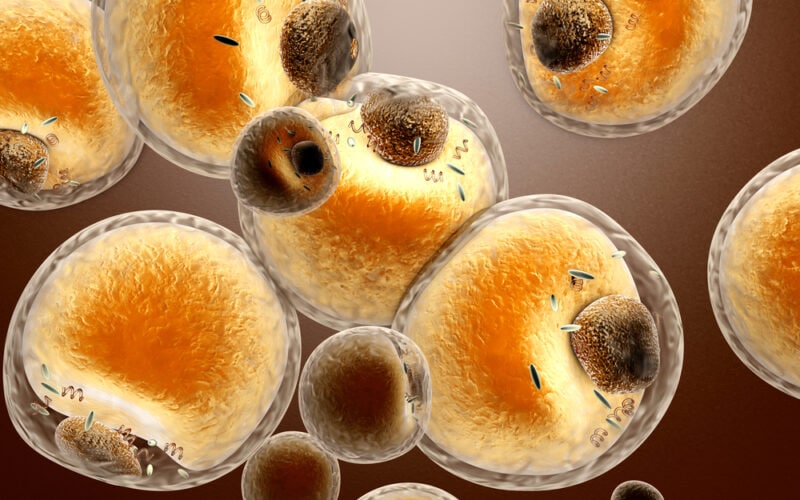How to Shift Your Body From ‘Fat-storing’ to ‘Fat-burning’ Mode

Very often people complain that despite following a healthy diet and a hardcore workout nothing happens. Their weight either stays the same or even goes up. Despite how awful it sounds there are things to be done to improve that state of things.
The thing is that our bodies are very complex and there are many more things about them that we do not know, than we do. In case you are not moving from the ‘dead point’, that means that something is going wrong. First thing that should enter your mind is that your metabolism is too slow. Since there are many factors that have influence your metabolism, we are going to have a closer look at them.
Start with metabolism
Liver
Your liver is responsible for many vital processes but when it gets filled with too many toxins and other bad things, its abilities decrease. Along with all these bad consequences, the state your liver influences the speed of all your metabolic processes. Clean it up and you will see how fast that weight will start to melt down. Cancel out all the processed food, alcohol and sweeteners and observe the miracle.
Adrenal glands
If your adrenal glands are stressed they are not working properly. It does not matter what type of stress you are going through – you have to find out what is causing it and get rid of it so that your adrenal glands can get back to work.
Steps to shift your body from a “fat-storing” to a “fat-burning” mode:
- Eating a diet that is high in protein and low in carbohydrates. This will help to stabilize blood sugar levels and reduce insulin resistance, which can help to shift the body into fat-burning mode.
- Engaging in regular physical activity, such as cardio and resistance training. Exercise helps to increase muscle mass, which can increase the number of calories your body burns at rest.
- Getting enough sleep. Lack of sleep can disrupt hormones that regulate appetite and metabolism, making it more difficult to lose weight.
- Managing stress through techniques such as meditation, yoga, or deep breathing. High levels of stress can increase the production of the hormone cortisol, which can lead to weight gain.
- Reduce your calorie intake. Eat healthy nutrient-dense foods and avoid processed foods and added sugar.
Ways a body burns fat
- Through physical activity: When you engage in cardio and resistance training, your body burns calories, which can lead to fat loss. The more intense the activity, the more calories you will burn.
- Through metabolic processes: Even when you are at rest, your body is burning calories through metabolic processes, such as maintaining body temperature and digestion. Building muscle mass can increase the number of calories your body burns at rest.
- Thermogenesis: Some foods can increase your body’s calorie burn through a process called thermogenesis, which is the production of heat in the body. Food high in protein and fiber can increase thermogenesis.
- Hormones: Hormones such as insulin and cortisol play a role in regulating fat storage and burning. Maintaining stable blood sugar levels and managing stress can help to regulate these hormones.
Process of burning fat explained
The process by which the body burns fat is called lipolysis. Lipolysis is the breakdown of stored fat in the body’s adipose tissue (fat cells) into smaller molecules called fatty acids, which can then be used for energy.
The process of lipolysis is triggered by the release of a hormone called glucagon, which is produced by the pancreas in response to low blood sugar levels. Glucagon signals the liver to release stored glucose (glycogen) into the bloodstream to raise blood sugar levels.
When blood sugar levels are high, the hormone insulin is released, which signals the body to store energy in the form of glycogen and fat. When blood sugar levels are low, insulin levels drop and glucagon levels rise, signaling the body to break down stored glycogen and fat for energy.
Once the fatty acids are released from the fat cells, they enter the bloodstream and are transported to the muscle cells, where they are used for energy through a process called beta-oxidation. During beta-oxidation, the fatty acids are broken down into smaller molecules called acetyl-CoA, which enter the Krebs cycle (also known as the citric acid cycle) to produce energy in the form of ATP.
It’s worth noting that it’s not possible to burn fat in just one specific area of the body, the body burns fat in general and not in a specific area, this is why the weight loss process happens gradually across the whole body.
It’s also important to keep in mind that burning fat is not only a function of lipolysis, but also the balance of energy intake (calories consumed) vs energy expenditure (calories burned through physical activity and metabolism) in order to lose weight. A healthy and balanced diet and regular physical activity are important for weight loss and maintenance. Consult with a healthcare professional before making any drastic changes to your diet or exercise routine.
Finally
Keep in mind that weight loss is a gradual process and it’s important to maintain a healthy and balanced lifestyle for a long-term result. Consult with a healthcare professional before making any drastic changes to your diet or exercise routine.









